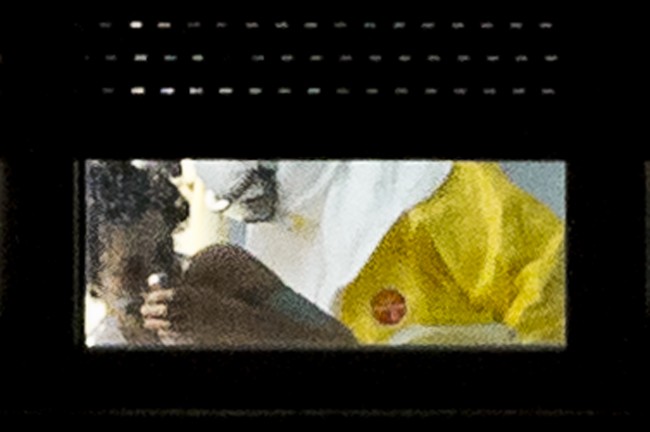Ebola: Lessons From The SARS Epidemic And Panic

A medical practitioner wearing protective clothing stands next to an isolated patient on the sixth floor of the the Carlos III hospital in Madrid, Spain, Saturday, Oct. 11, 2014. A Spanish hospital official says Teresa Romero, the nursing assistant infected with Ebola is “stable,” hours after authorities described her condition as critical. She is the first person known to have caught the disease outside the outbreak zone in West Africa. Romero contracted the virus while helping treat a Spanish missionary who became infected in West Africa, and later died. (AP Photo/Daniel Ochoa de Olza)
CAMILLA Cavendish on Ebola:
You can’t take a corkscrew with you on an aeroplane, but you can take a deadly virus. However much we want to believe the soothing words from the authorities about how difficult it is to catch ebola — and they are right — we may still feel a primordial shudder…
Airport thermometers won’t detect many victims, since it can take three weeks for ebola symptoms to appear. And people who are desperate to fly may not be honest with questionnaires asking if they have been in contact with a sufferer. So far the screening of passengers leaving Liberia, Guinea and Sierra Leone has led to fewer than 100 people being prevented from flying. Most of them turned out to be suffering from malaria…
The cases of Teresa Romero, the nurse who is critically ill in Spain, and Thomas Eric Duncan, the Liberian who died in America last week, suggest a level of complacency in those countries..
“The ability of affected nations to isolate patients will also depend on equipment being available. The 2003 SARS epidemic was quelled with the same approach: isolate primary cases, quarantine their contacts and isolate those that become sick. There were just over 8000 cases of SARS worldwide, and by the end global supplies of surgical masks were exhausted. Toronto was one of the cities most seriously affected and struggled to control the virus. “We couldn’t have handled another Toronto,” says Michael Osterholm, director of the Center for Infectious Disease Research and Policy at the University of Minnesota in Minneapolis.”
“New Jersey officials have issued a mandatory quarantine order for members of an NBC crew that was exposed to a cameraman with Ebola. The order went into effect Friday night after state health officials said a voluntary 21-day isolation agreement was violated.”
Does screening work?
If you check airline routing sites (I like Skyscanner), you’ll see that there are no direct flights between the United States and those three countries. Passengers who can find flights — some are still running — connect through Brussels, Frankfurt, Paris, sometimes even Toronto. If the connection is immediate, off one plane and onto another, the itinerary is easy to trace. If it’s broken, by a stay in the connecting city of a day or more or a transfer to a non-affiliated airline, pinpointing the place of origin becomes more difficult…
…Thomas Duncan, the Ebola patient who died Wednesday in Dallas — passengers can be infected, and on the way to developing symptoms, yet pass exit screening. Duncan was checked for fever at his origin airport in Liberia, and approved to fly. He developed Ebola symptoms, and became infectious, after he arrived in the US…
The country which did the most to attempt to control SARS was probably Singapore, which because of its political culture was able to impose mandatory fever screening not only at airports and land crossings, but in schools as well… Singaporean researchers concluded that temperature screening had not been useful…
Screening passengers for fever makes it look like someone is doing something. (It’s also a surprisingly active area of engineering research; check these post-SARS papers from 2005, 2006, 2009, 2013 and this year.) But as Duncan’s case demonstrated, the critical point for “border control” of Ebola may be not the airport, but the emergency room.
Prevention means helping Africa and education…
Posted: 12th, October 2014 | In: Reviews Comment | TrackBack | Permalink


